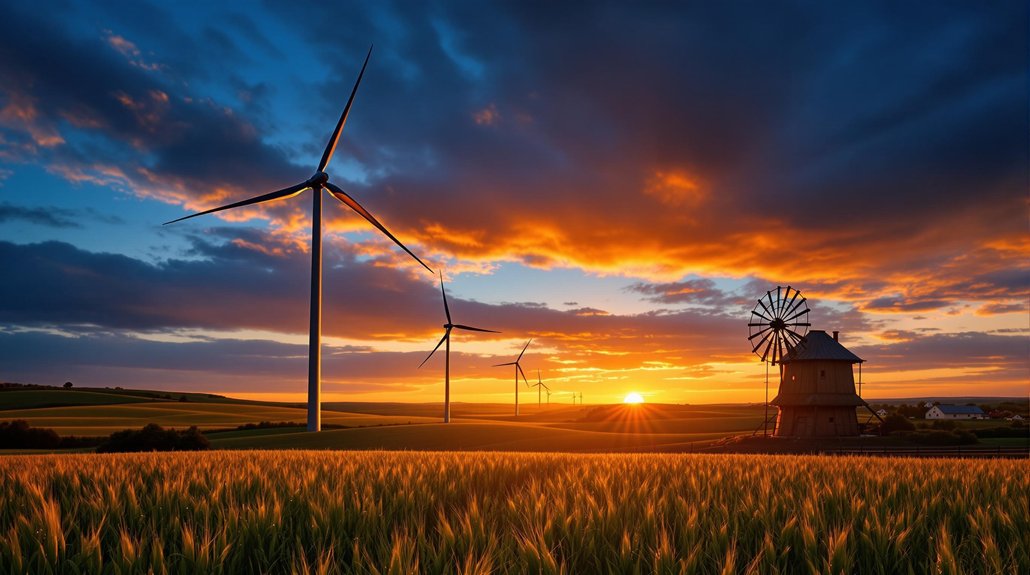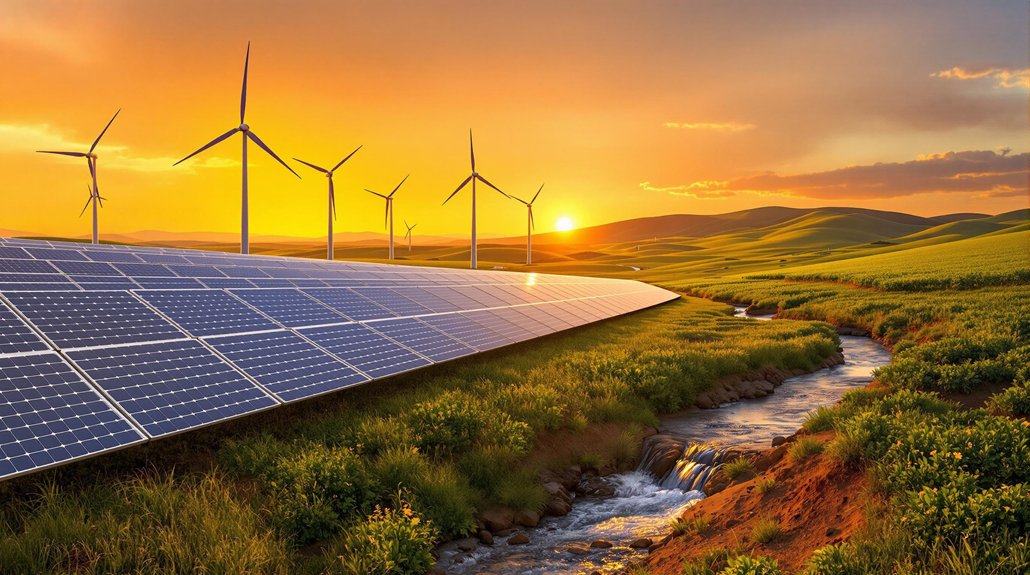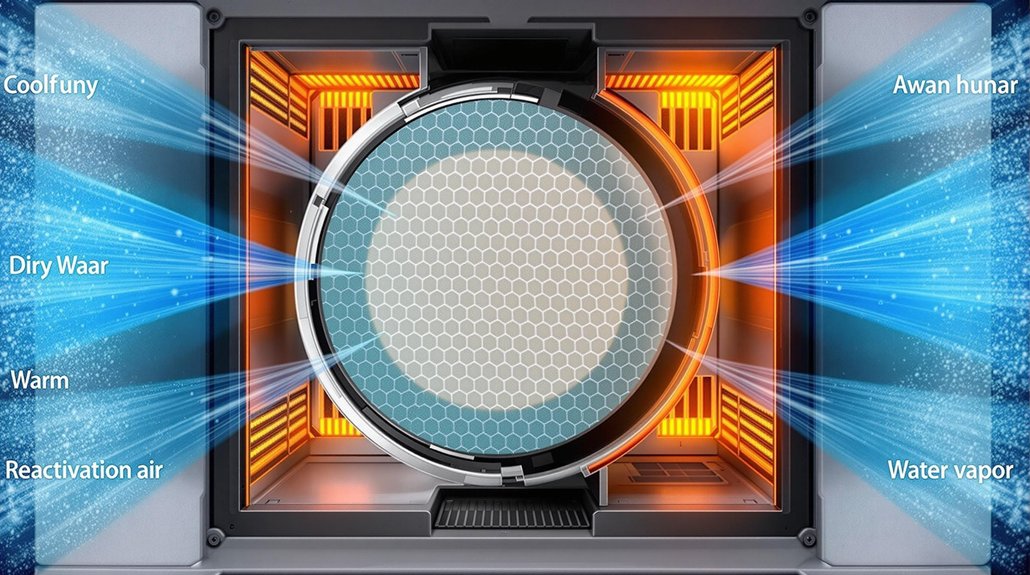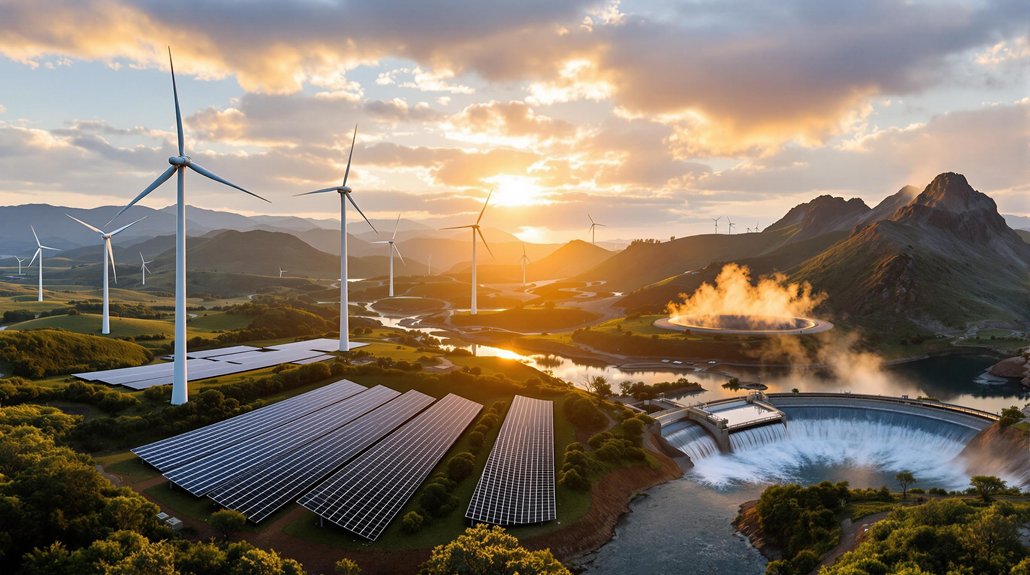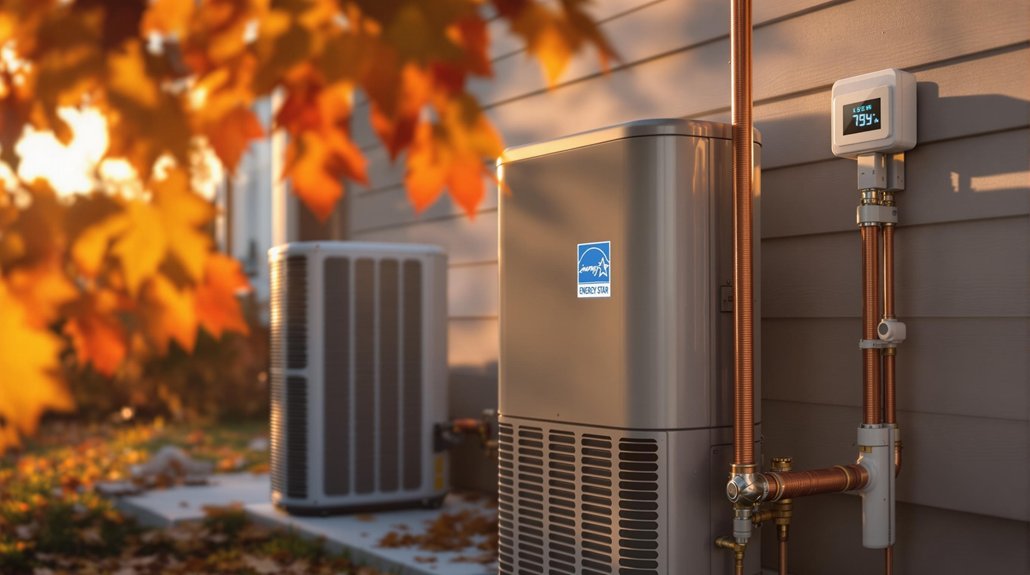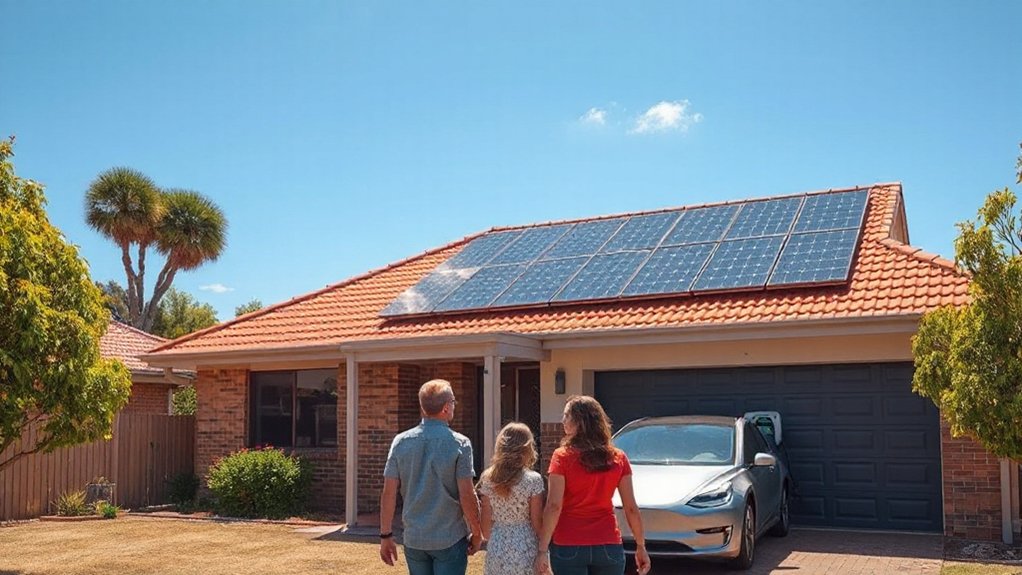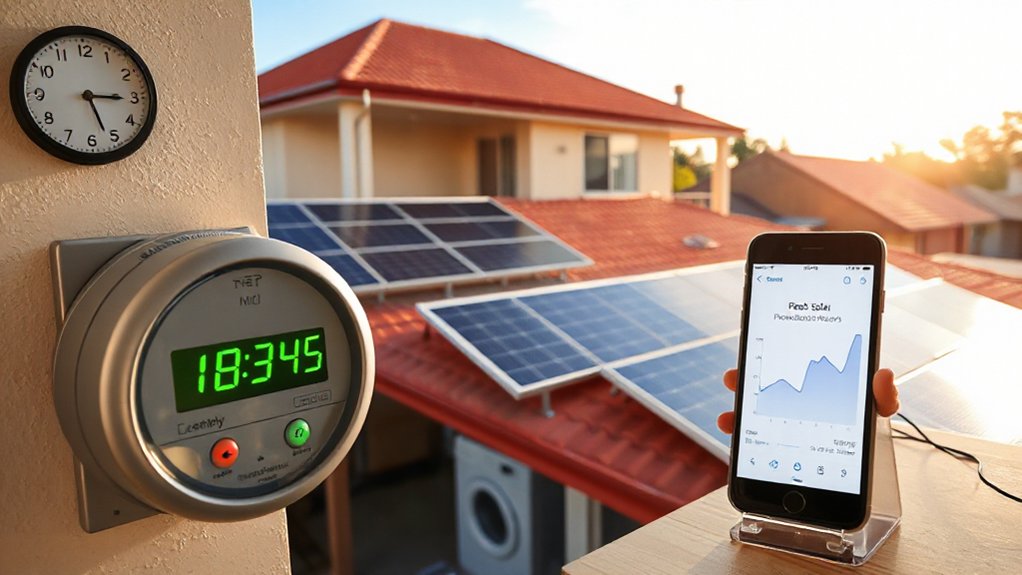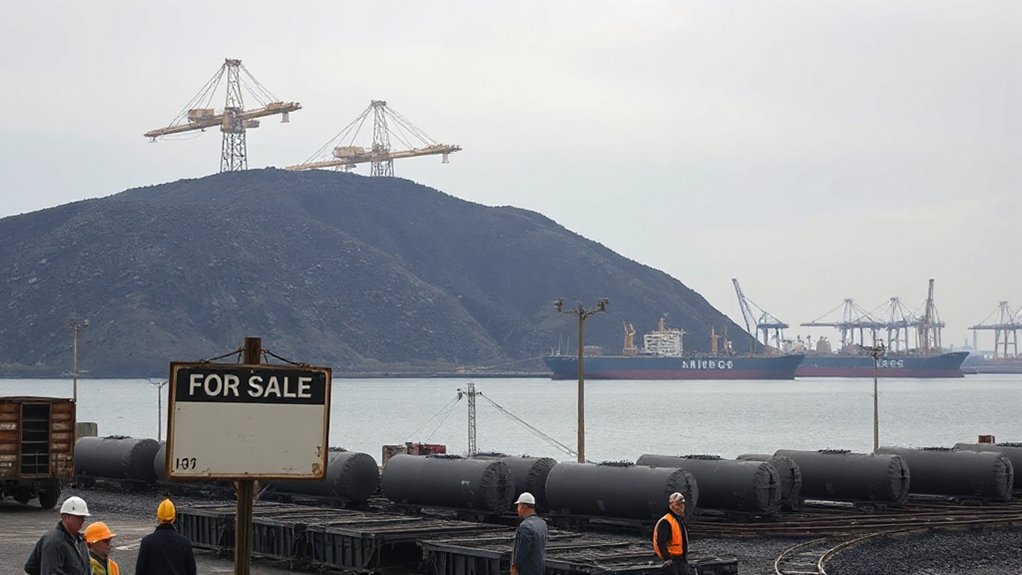Windmills serve multiple sustainable purposes beyond electricity generation. They extract groundwater for irrigation, power grain mills, and support textile production. Modern windmills contribute to hybrid energy systems with solar installations and provide backup for microgrids. Their applications extend to water management, including draining flooded fields and aerating ponds. As renewable energy demands grow, these versatile structures continue to evolve with technological innovations and expanding applications.
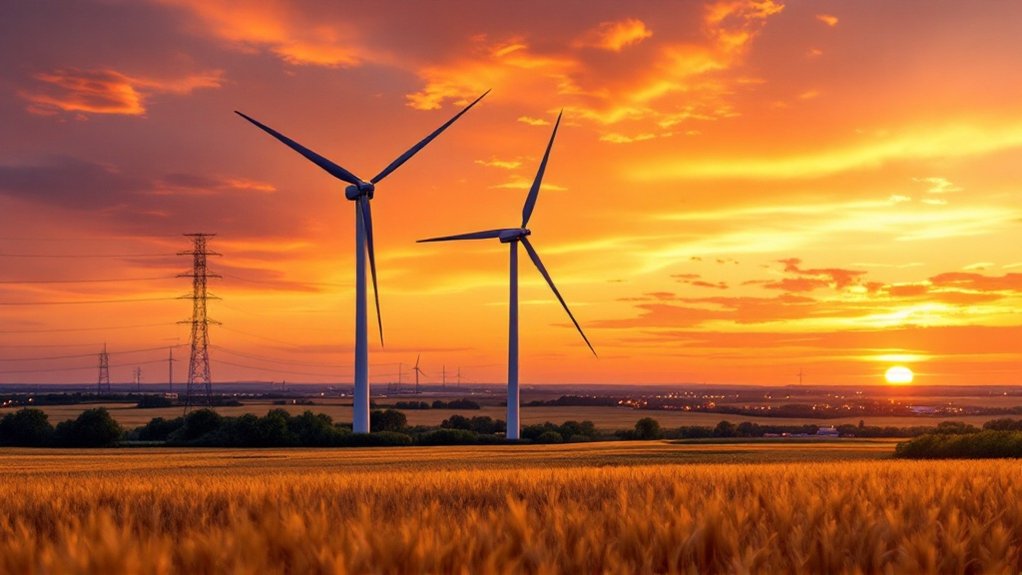
Powerhouses of renewable energy, windmills serve numerous practical purposes in today’s world. These iconic structures convert wind energy into electricity, supplying clean, renewable power to the electrical grid. This conversion reduces reliance on fossil fuels and contributes to national energy independence. Homes, businesses, and industries across the country benefit from this sustainable power source.
Beyond electricity generation, windmills play an essential role in water management. They’re used to extract groundwater for irrigation in agricultural areas and supply drinking water in rural communities. Farmers use windmill-powered pumps to drain flooded fields and manage water levels. The same technology helps aerate ponds and lakes, improving water quality for aquatic life.
In agricultural processing, windmills have powered grain mills for centuries. They grind wheat, corn, and other grains into flour for baking and food production. This traditional approach supports local food systems while preserving historical milling techniques that have sustained communities for generations.
The lumber industry also benefits from windmill power. Sawmills powered by wind energy cut logs into lumber for construction and woodworking. This approach reduces energy costs in timber processing while utilizing a renewable power source, making the lumber industry more sustainable.
Windmills serve the food production sector by pressing oils from seeds and nuts. This process creates cooking oils and even biofuels without fossil fuel inputs. Local oil production becomes more economical and environmentally friendly when powered by wind. Wind energy provides economic advantages through job creation and additional income for farmers who lease their land for turbine installation.
The textile industry has historically relied on windmills to power looms for weaving and spinning wheels for yarn production. This application supports sustainable manufacturing practices and helps preserve traditional textile-making methods. Modern wind technology has seen significant technological progress that increases efficiency and expands possible applications across industries.
Today’s windmills often function as part of hybrid energy systems. They complement solar installations and provide backup power for microgrids. Most modern wind turbines feature horizontal axis designs with three blades that efficiently capture wind energy even at lower speeds. When integrated with energy storage technologies, windmills help stabilize energy supply in remote locations. This integration supports off-grid energy independence and creates more resilient local power systems.
Wind power continues to evolve as a versatile, sustainable energy solution for various applications.
Frequently Asked Questions
How Noisy Are Modern Wind Turbines?
Modern wind turbines produce noise levels of 35-45 decibels at 300 meters distance, comparable to ambient rural sounds.
Up close, they generate 60-80 decibels. Technology has made today’s turbines much quieter than older models.
They’re equipped with sound dampening systems and advanced blade designs.
Most regulations limit turbine noise to 35-45 decibels at nearby homes, with stricter nighttime limits.
Distance greatly reduces the sound.
What Happens to Windmills During Extreme Weather?
Modern wind turbines have built-in safety systems for extreme weather. When winds exceed 55 mph, they automatically shut down. The blades turn to reduce wind resistance, and mechanical brakes activate.
During severe cold, heaters keep components functioning down to -22°F. Lightning protection systems divert strikes away from critical parts.
Turbines in hurricane-prone areas feature stronger foundations and reinforced designs to withstand gusts up to 156 mph.
How Long Does a Typical Windmill Last?
Modern wind turbines typically last 20-30 years.
While foundations and towers often endure the full lifespan, other components may need earlier replacement. Blades, gearboxes, and generators sometimes require repairs before the turbine’s end of life.
With proper maintenance and upgrades, some turbines can operate beyond their expected lifespan.
Environmental conditions greatly affect longevity, with offshore turbines facing harsher challenges than land-based ones.
Can Windmills Affect Local Wildlife?
Wind turbines can impact local wildlife in several ways. Birds and bats sometimes die from colliding with spinning blades, with estimates of 140,000-500,000 bird deaths annually in the U.S.
Wind farms can also disrupt habitats, fragment migration routes, and affect animal behavior. The noise may interfere with animal communication.
Many companies now implement strategies like careful siting, temporary shutdowns during migrations, and wildlife-friendly designs to reduce these impacts.
Are Small Residential Windmills Cost-Effective?
Residential windmills often aren’t cost-effective for most homeowners.
With initial costs between $10,000-$80,000, payback periods range from 6-20 years.
They’re only viable in areas with 10-12 mph average wind speeds and at least an acre of land.
Annual maintenance adds 1-2% of turbine cost.
Government incentives can reduce initial expenses by 50-60%.
Most urban or suburban locations lack sufficient space and wind conditions.
